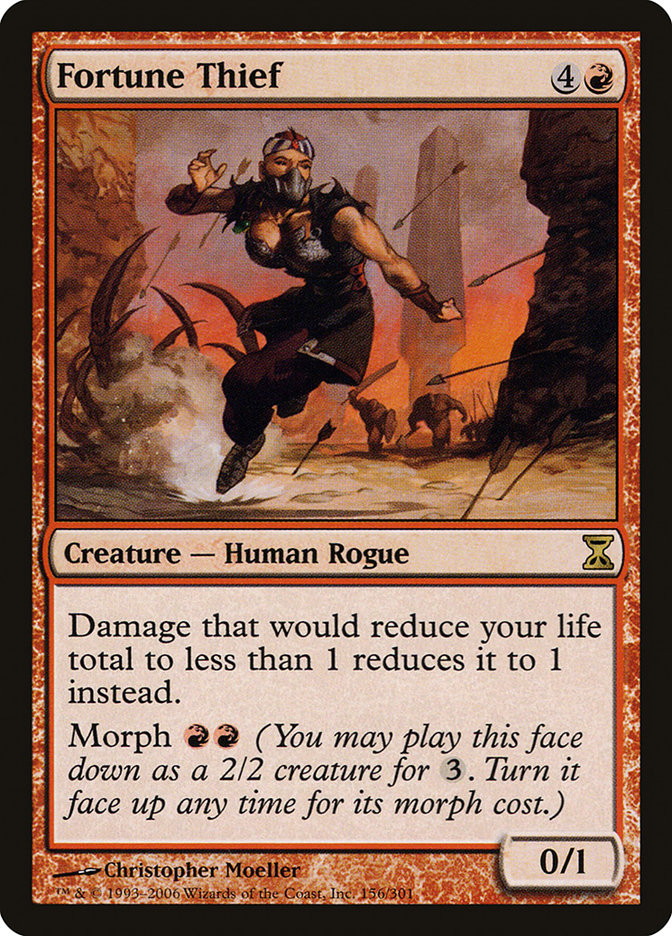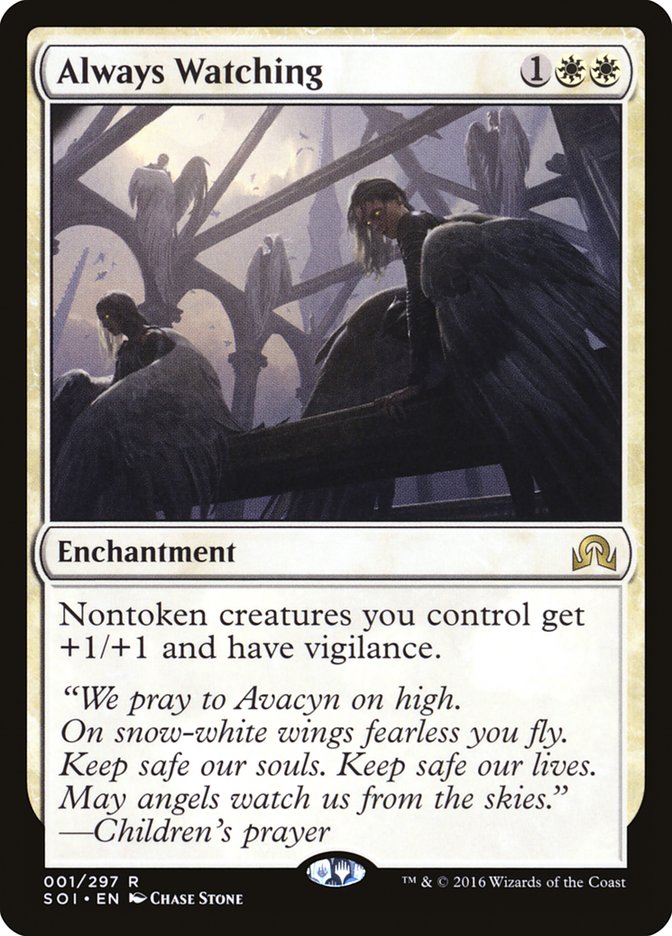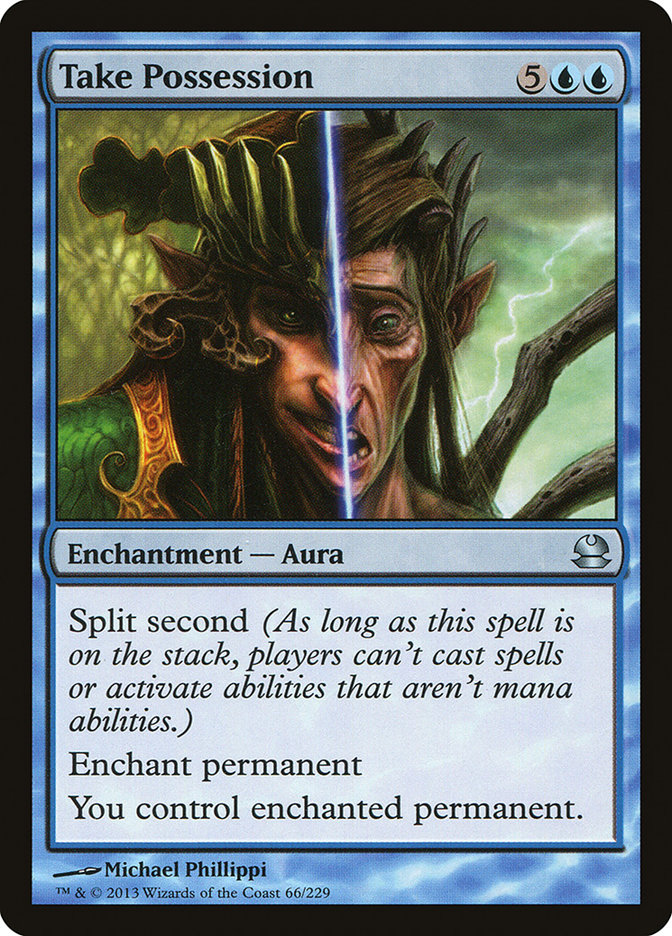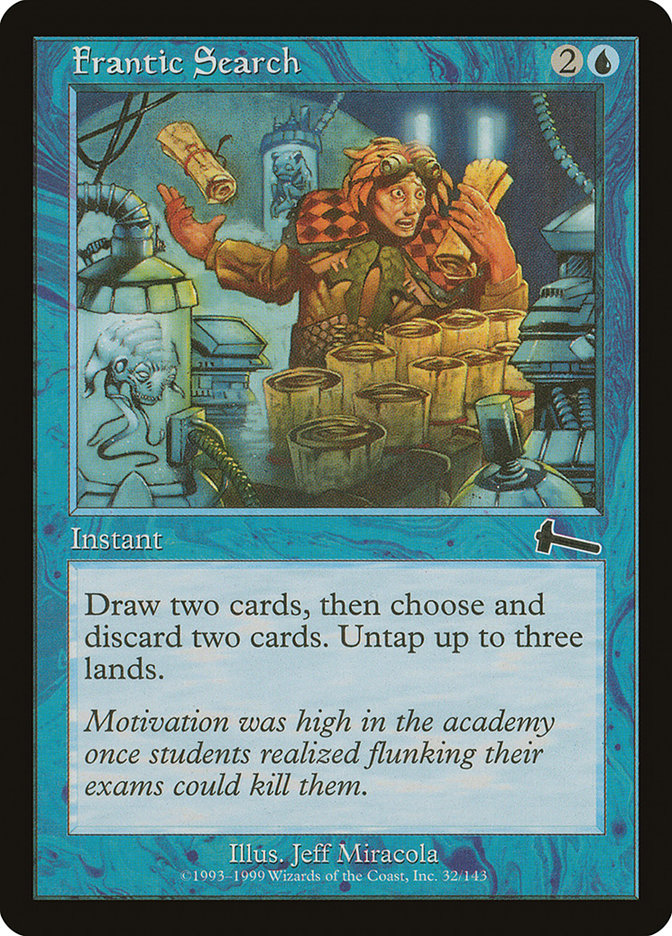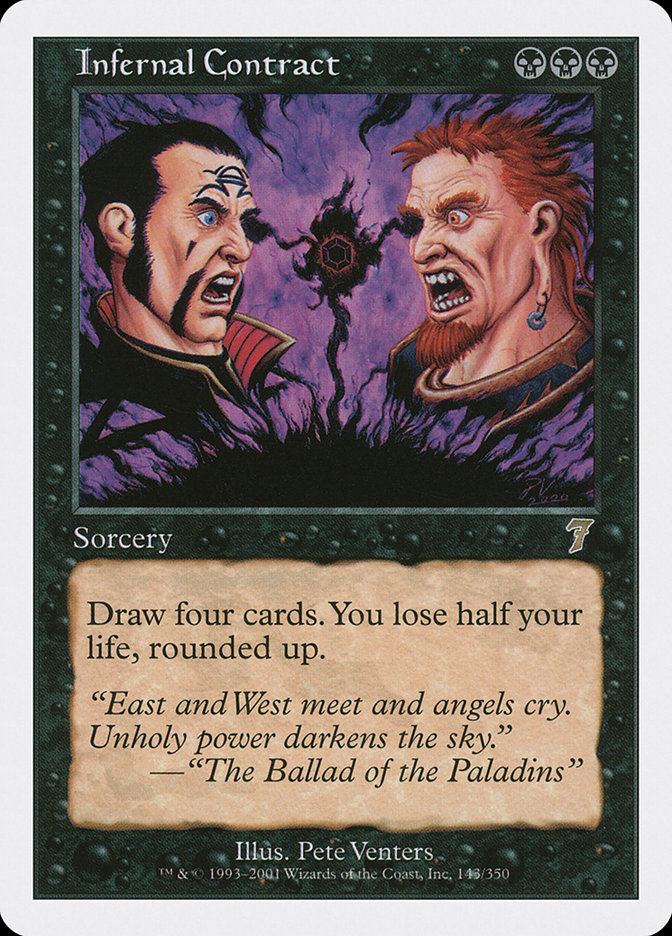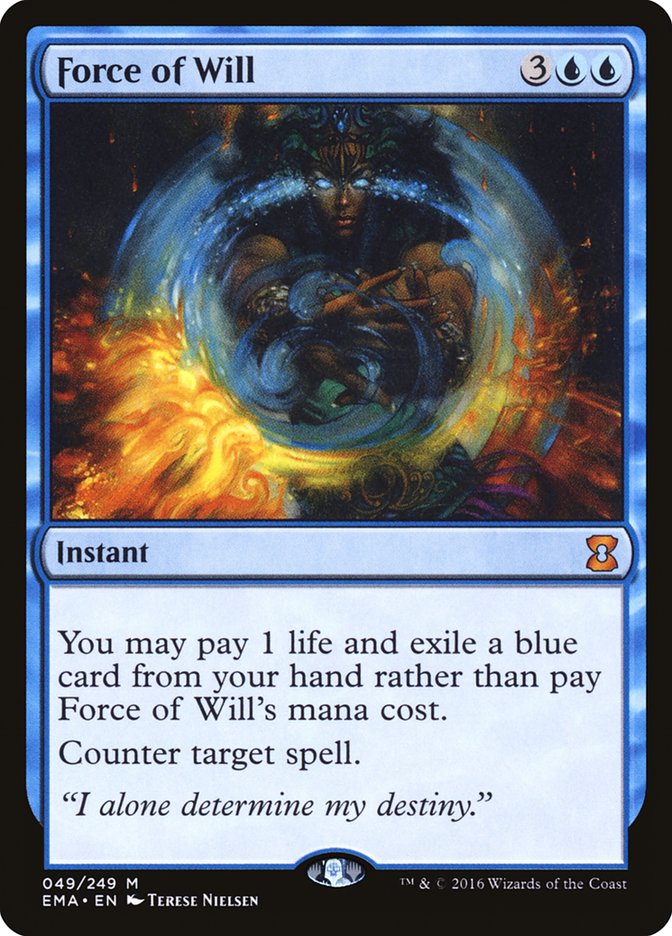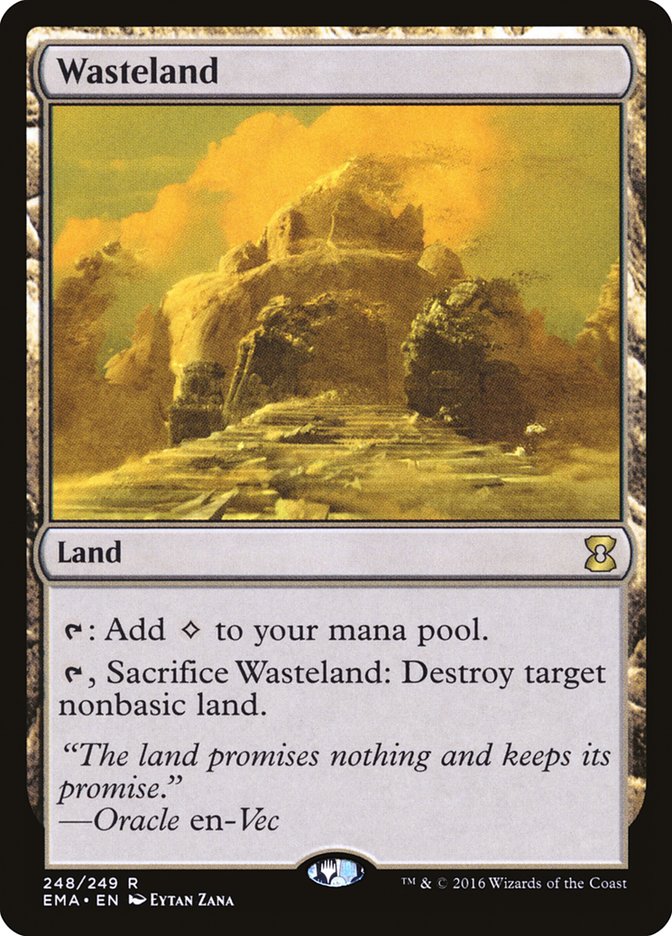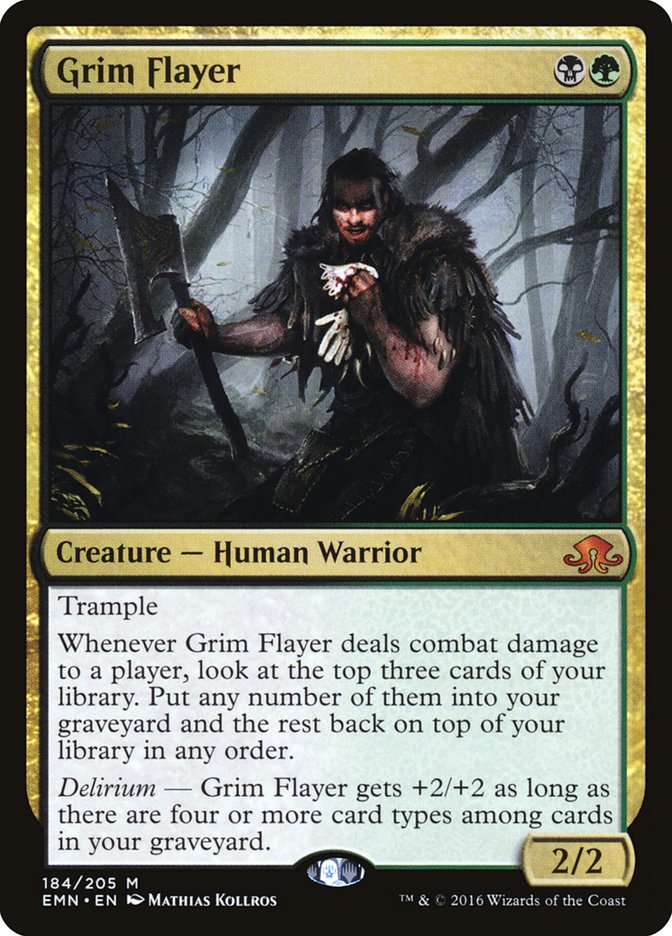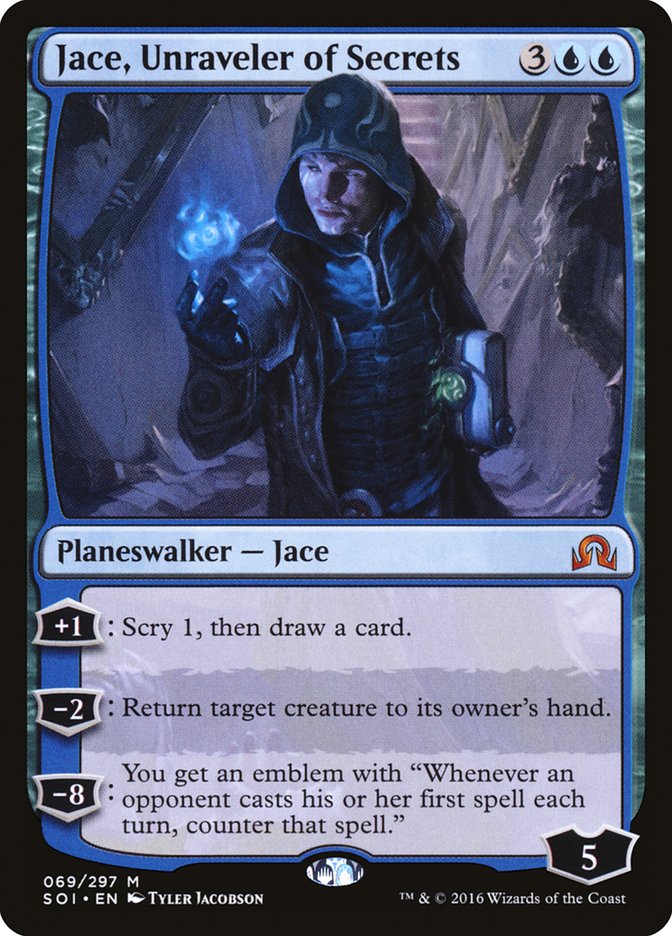Last week, NFL player Cassius Marsh had his Magic collection stolen. He wasn’t a casual player, either—multiple Modern and Legacy decks were among the loot taken from the back of his SUV, and he estimated the value of his lost cards at $20,000.
Thankfully, Marsh’s story had a happy-ish ending. A few days ago, several WotC employees dug into their private collection and gave Marsh about $2,000 worth of cards. (The company also donated an equivalent amount to a local children’s charity.) It didn’t replace everything he had lost, but it was something.
I’m happy that WotC was able to help Marsh begin to rebuild his collection, but most players who get their cards stolen aren’t quite as lucky. And while collection theft isn’t as common as it was a few years ago (a theft ring was successfully broken up by judges and community members back in 2009), I still see tearful posts about it show up on my Facebook wall and Twitter feed a couple of times a year. Theft isn’t the only way your Magic collection can be taken from you, either—floods, fire, and even mid-game drink spillage can destroy thousands of dollars’ worth of cards in an instant.
While this column usually focuses on ways to increase the value of your Magic collection, I want to spend this week looking at some common-sense measures that you can take protect what is already yours. Incremental speculation and good trading are important parts of savvy collection-building, but they can’t do you much good if all of your gains are destroyed by something outside of your control. Sometimes, even the most trusting among us need to spend a little time thinking about safety and security.
Stop, Thief!
What’s the easiest way to prevent your cards from being stolen? Lock them up in a safe and never look at them again. Problem solved!
What, you actually want to play with your Magic cards? Well, that makes things a lot more difficult.
Most “how to stop a Magic thief” articles will stress the importance of leaving most of your expensive cards at home. It’s good advice. Unfortunately, it isn’t particularly useful for players who play a variety of formats, or who like to Cube at Opens, or who are high-volume traders. Obviously you don’t want to be that one guy who lugs his entire collection around everywhere in a massive rolling bin, but I’m going to assume that most of you are a little more savvy than that.
The main anti-theft rule I follow is this: only one item leaves my bag at a time. That means one binder or one deck. Now, I’m not saying that you have to be that paranoid when you’re kicking around your LGS at the end of the night and you’ve played with the half-dozen people in the room for years, but I will always follow this rule if I’m in a new shop or hanging out at a major event.
You will be tempted to break this rule all the time. Someone wants to look at two binders at once, or someone will show up and ask to trade while you’re in the middle of a casual game. You will look the other person up and down, feel confident that they’re not a thief, and consent. But that second trade partner or casual opponent isn’t why you should be cautious—it’s the person sitting next to them, or standing behind you, or who is just passing by. They’re just waiting for one of you to look away, and then bam—binder gone, deck gone, thief gone.
I only had to get one deck swiped from me at a Grand Prix before I learned (the hard way) that inattentiveness is the thief’s greatest weapon. If your nose is buried in a game or in your trade partner’s binder, you aren’t paying attention to your other stuff. You cannot expect your opponent or trade partner to watch your stuff with the same attentiveness that you would. It’s not their collection. With only one deck or binder out at a time, nothing is going to end up in somebody else’s bag unnoticed.
Entire bags being stolen is slightly less common, but it does happen. Most often, this occurs when players are in the middle of a draft or a game and everyone is otherwise distracted. You should get into the habit of slipping the loop of your bag or backpack around the leg of whatever chair you’re sitting in. That way, a thief can’t grab it without alerting you to their presence. If the chair doesn’t have standard legs, slip a loop around one of your own legs instead.
It seems like it would be safe to keep extra cards in your car while you’re in the convention center all day, but this is another area where you should take extra precautions. Try to park close to a security camera if possible, and if you’re in an outdoor lot, try to avoid pools of darkness. Make sure there are no visible backpacks or deck boxes in the backseat, especially if you’re at the designated parking lot for a major Magic event. Keep your bags in your trunk (when you have to) or back in your hotel room (when you can).
Help, I Think My Cards Were Stolen! A Handy Guide to Your Next Steps
Even if you take all of my advice, you may one day find yourself facing the unthinkable: you’re at a large event, and one of your decks, binders, or bags is gone! What should you do now?
First, make sure that your items were in your possession at all. Did you leave them in your car? Your hotel room? Back home? Text your friends—did you lend them that extra deck late last night? Is it possible they grabbed it from your bag this morning without telling you because they knew you were planning to grind Modern all day? Carelessness is far, far more common than theft.
Next, retrace your steps and figure out a timeline of events. Where did you last see your bag? Did you have it at lunch? Round 3? Round 4? During that post-bathroom-break trade? This can be especially fruitful if you’re a big trader or a casual player who likes to play large multiplayer games—chances are, you left your deck sitting on the table because you got distracted by something else. If that playgroup is still grinding out games or that table is still filled with traders, your deck might be sitting exactly where you left it.
If you still haven’t found your cards, it’s time to inform the Tournament Organizer of your loss and check out the Lost and Found. Tons of cards are found by nice, honest players throughout any major tournament weekend and it’s possible that your precious collection was already turned in by a Good Samaritan. Even if your cards aren’t there, tell the tournament organizer what your deck looks like. That way, they’ll be able to contact you if anything turns up.
This, by the way, is why it’s always a good idea to have at least one odd or unique card in each of your decks. Finding a generic Jund deck in a room full of generic Jund decks is hard. Finding a Jund deck with Korean Tarmogoyfs and foil Christopher Rush Forests is significantly easier.
At this point, your best bet is to check in with whomever you were playing or trading with when you suspect the theft occurred as well as the event site’s card vendors. Did anyone see anything? Did anyone accidentally pick up a deck or a binder that wasn’t theirs? Did any of the vendors buy a Jund deck with Korean Tarmogoyfs and foil Christopher Rush Forests?
Should you file a police report? If your cards were valuable enough, yes. The dollar amount required for felony theft varies by state, but it’s very possible that whoever just stole your collection has committed a serious crime. I wouldn’t expect the police to pound the pavement searching for leads on your behalf, but they have proven amenable to helping in the past. In one case, a victim of card theft found his collection for sale online and arranged to meet the buyer at a local card shop to make the sale. He alerted the cops, and they were able to catch the thief red-handed.
At this point, you’ll have to pursue these sorts of long-shot leads pursue if you have any hope of getting your cards back. Keep an eye on Craigslist, eBay, and on your local Facebook buy-and-sell groups. Reach out to all the local game shops in your area and let them know what your collection looks like. Hit up the pawn shops as well, if you have time. These Hail Marys are unlikely to connect, but stranger things have happened. I was able to recover my own stolen deck thanks to a friend in the community who spotted it in someone else’s collection several weeks later.
Water, Fire, and Insurance
Unfortunately, there isn’t a lot you can do to protect your cards from natural disasters. I do recommend double-sleeving anything worth more than $100, though, as well as all of your active/competitive decks if you can. Both Ultra Pro and KMC make a decent ‘inner sleeve’ product, and they do an excellent job of preventing an accidental spill from wrecking the condition of your best cards. They’re also good at keeping cards from getting dinged and at keeping humidity from causing foils to curl over time.
I also recommend getting a side-loading binder and keeping cards one to a pocket. Not only does this minimize ring wear and scuffing, but it prevents the pockets from becoming loose, which could lead to cards falling on the ground and being lost or destroyed. Side-loading binders are also much harder to surreptitiously snatch cards out of. Again, Ultra Pro makes a pretty decent product that I like to use.
If your Magic collection is very large, you should at least consider getting it insured. If your income is high enough that you can afford a large Magic collection, you should not be living without renters’ insurance anyway. For a few hundred bucks a year, everything you own will be protected in the case of flood, fire, theft, etc. It’s the only insurance I have that I feel is fairly priced and that I don’t mind paying for.
The problem is that most renters’ (and homeowners’) insurance policies will not cover very much of your Magic collection. The way these policies tend to work is that your coverage is usually divvied up by category—say, $2,000 toward wardrobe, $1,000 toward kitchenware, $5,000 toward electronics, etc. If you have to make a claim, you’ll only be eligible for reimbursement up to your limit in that category.
So even if your clothing limit is $2,000 and you only ask for $500 in reimbursement there, you can’t claim that other $1,500 toward your Magic collection. And you generally cannot choose these limits when you sign up—they’re categorical values based on the lives of average consumers, not us crazy Magic players who have half their assets tied up in a single collectable good.
In general, you have two choices when it comes to getting your cards fully covered. The first is to sign up for a policy so large that it will cover your cards naturally. This is rarely the right idea, though, since you’re essentially paying for large amounts of insurance on other items that you don’t actually own—say, $100,000 worth of other consumer goods.
The other option is to get a collectibles rider, which will cover your cards and whatever else you have in that category—expensive records, action figures, vintage games, etc. Some insurance companies offer these as separate policies, while others do it as an addition to your standard renters’ insurance policy. Some require signed appraisals of your collection; others don’t. These policies vary in price, but none of them are very cheap.
If you’re curious, call up whomever you get your renters’ insurance from (or, if you don’t have that, your car insurance agent) and ask them for a quote. You should have a rough idea of what your Magic card collection is worth before you get on the phone with them, though. You should also make sure you know exactly what is covered with your policy. For example, if you live in a high flood/hurricane area, you might have to pay more to get your cards covered in the event of storm damage.
Should you get your cards insured this way? I can’t decide that for you. The concept of insurance is tied up in the idea of paying money to hedge against a catastrophic loss, and that’s always going to be a personal choice depending on your own risk/reward philosophy. I do think it is at least worth looking into insurance so that you can make an informed decision to either go for it or not, though. Otherwise, you may find that the decision has been made for you by some burglar or natural disaster and you’ll wish that you had thought about it a little bit more.
This Week’s Trends
WotC announced yesterday that they would be reprinting Eternal Masters for the holidays, albeit in limited quantities. If your LGS had boxes of Eternal Masters over the summer, chances are it’ll get some more. As expected, people who didn’t buy into Eternal Masters are pretty thrilled at the opportunity while people who bought in heavily are worried that their investment will be destroyed.
First of all, the original Eternal Masters print run was quite small (much more so than Modern Masters) and the set can take some more depreciation before anyone should be worried. It’s rough if you went deep on sealed boxes or singles for speculation, but it shouldn’t be bad if you just have a few playsets of each card put away for personal use. I doubt WotC will flood the market, and I don’t expect these additional boxes to move EMA prices more than 10-20%.
In terms of what this means in terms of long-term trends, it’s really just more of the same signs we’ve been seeing for months. WotC clearly took the community seriously when they begged for more reprints over the past couple of years, and 2016 has been full of high-profile and easily accessible reprints. As I’ve been saying for a few months now, it is far less safe to have a lot of money invested in long-term specs than it was a year or two ago. I doubt your collection is going to tank, and I wouldn’t panic, but I’m no longer buying nearly as many stacks of cards to sock away for low-risk long-term gain.
In Standard, Grim Flayer; Archangel Avacyn; Jace, Unraveler of Secrets; and Collective Brutality are either up or stable. The lands are trending up, too—Needle Spires, Wandering Fumarole, Smoldering Marsh, Game Trail, and Foreboding Ruins are all showing some upward momentum. Almost everything else is slowly trending down, including every card in Kaladesh. Is something wrong with those cards? No. People just keep drafting the set, so the supply keeps increasing day after day, vastly outpacing Standard demand. It happens to every large fall set.
In Modern, Skred Red staples are up after a major Grand Prix win in Texas.
Creatures (8)
Planeswalkers (5)
Lands (22)
Spells (25)

Scrying Sheets, Koth of the Hammer, and even Snow-Covered Mountain have seen some financial movement. While the deck is both good and fun, I expect these prices to dip again now that the hype has died down a bit—in fact, they’re already trending a bit in that direction. Sell into hype, but they likely won’t hit their pre-GP lows again for a while. Scrying Sheets in particular is quite hard to reprint.
Otherwise, Modern has begun to enter its late fall/early winter doldrums. This happens every year, and now is the best time to buy Eternal staples that you’re going to want over the next year. Stores will be trying to clear out their inventory a bit leading up to January 1st, and you’ll be able to take advantage.
Comments from Last Week
If there is going to be a post-Modern format, I think it will require fetchlands to be banned. Not only are they expensive, but they require games to have an incessant amount of shuffling. I’m also not sure that having consistent four-color manabases is a good thing. Thoughts?
– Nabil Stendardo
This sounds like a fairly realistic possibility, Nabil. Not only are all your points well-taken, but I think WotC agrees with them—they were very vocal about how much they disliked how easy it was to play four-plus colors in last year’s Standard format. This would also open up the format in some potentially exciting ways—since all of last year’s best Standard decks relied on fetchlands, the Anafenza and Collected Company decks would be at a major disadvantage.
Will the appeal of Frontier degrade over time? It’s not expensive, but only because it’s not a real format yet. The power level is low, but only because there aren’t many Frontier-legal sets right now. You can play your old Standard decks, but that won’t be true once there are a few more blocks of cards. Won’t the barrier of entry just keep going up?
– Mike Brum
Yes, Mike, as time progresses, all Eternal formats will continue to become warped toward their most powerful cards. This happened with Vintage (back when it was known as Type One), Legacy, and most recently Modern. It will happen with Frontier (or whatever comes after Modern) as well. The answer to this problem was a format called Extended, which rotated but which had a larger card pool than Standard. People didn’t seem to like it much, though perhaps it is time for a comeback.
The alternative is to continue developing a new Eternal format every X number of years with the knowledge that power creep will eventually overtake it. Reprints can help with the accessibility issues, but nothing can help the fact that the more powerful cards you print, the higher the power level of your Eternal formats. The idea behind Frontier isn’t that it will somehow fix this problem once and for all; it’s that it will provide another home for recent interactive cards that aren’t good enough for Modern. And then, X number of years later, the process repeats itself.


